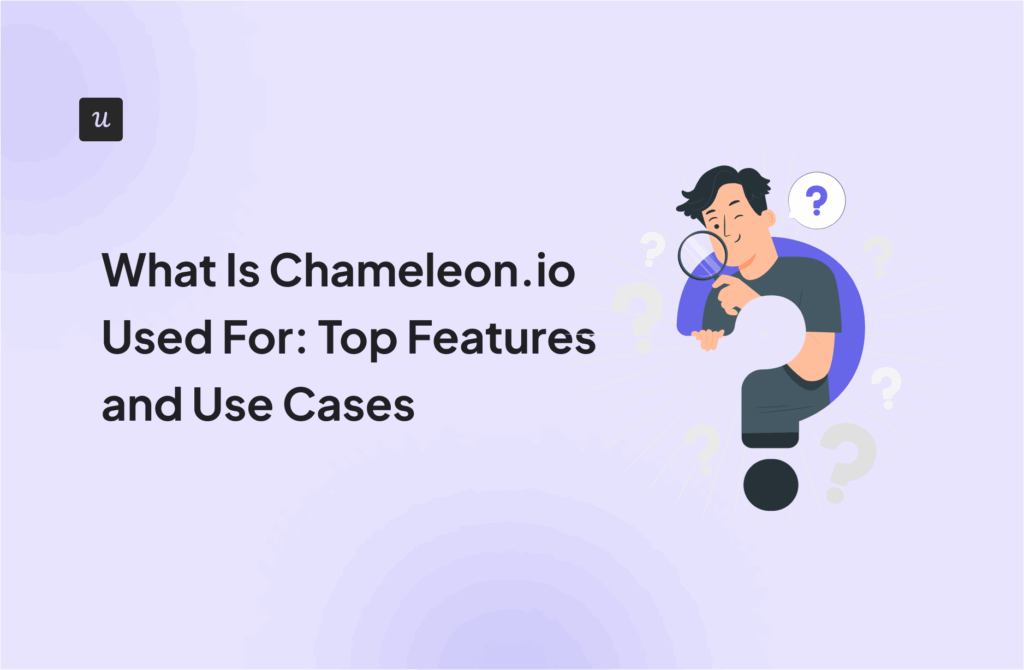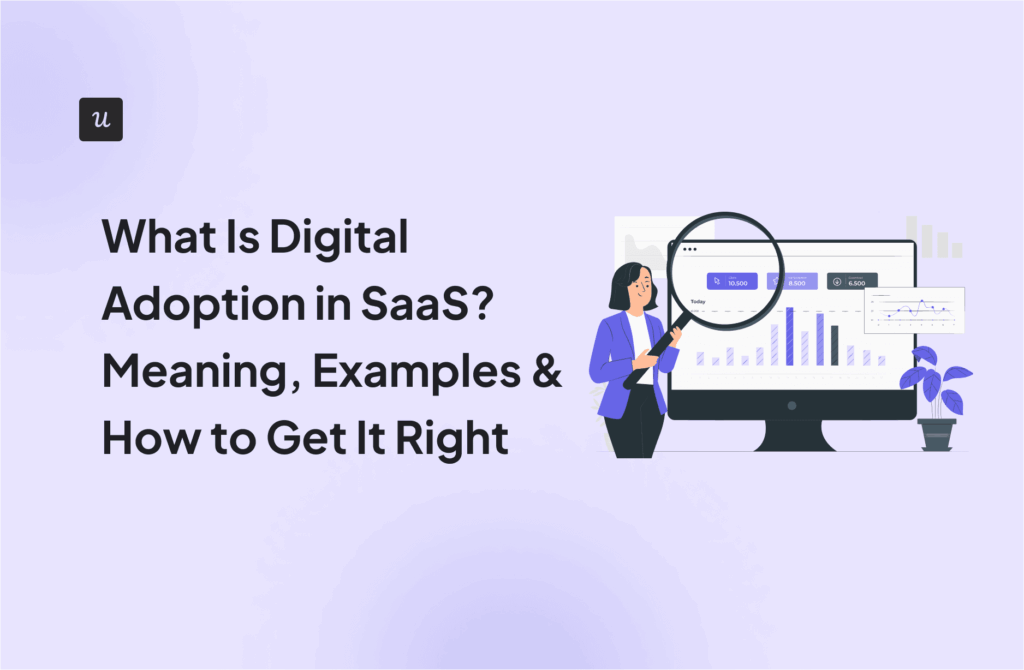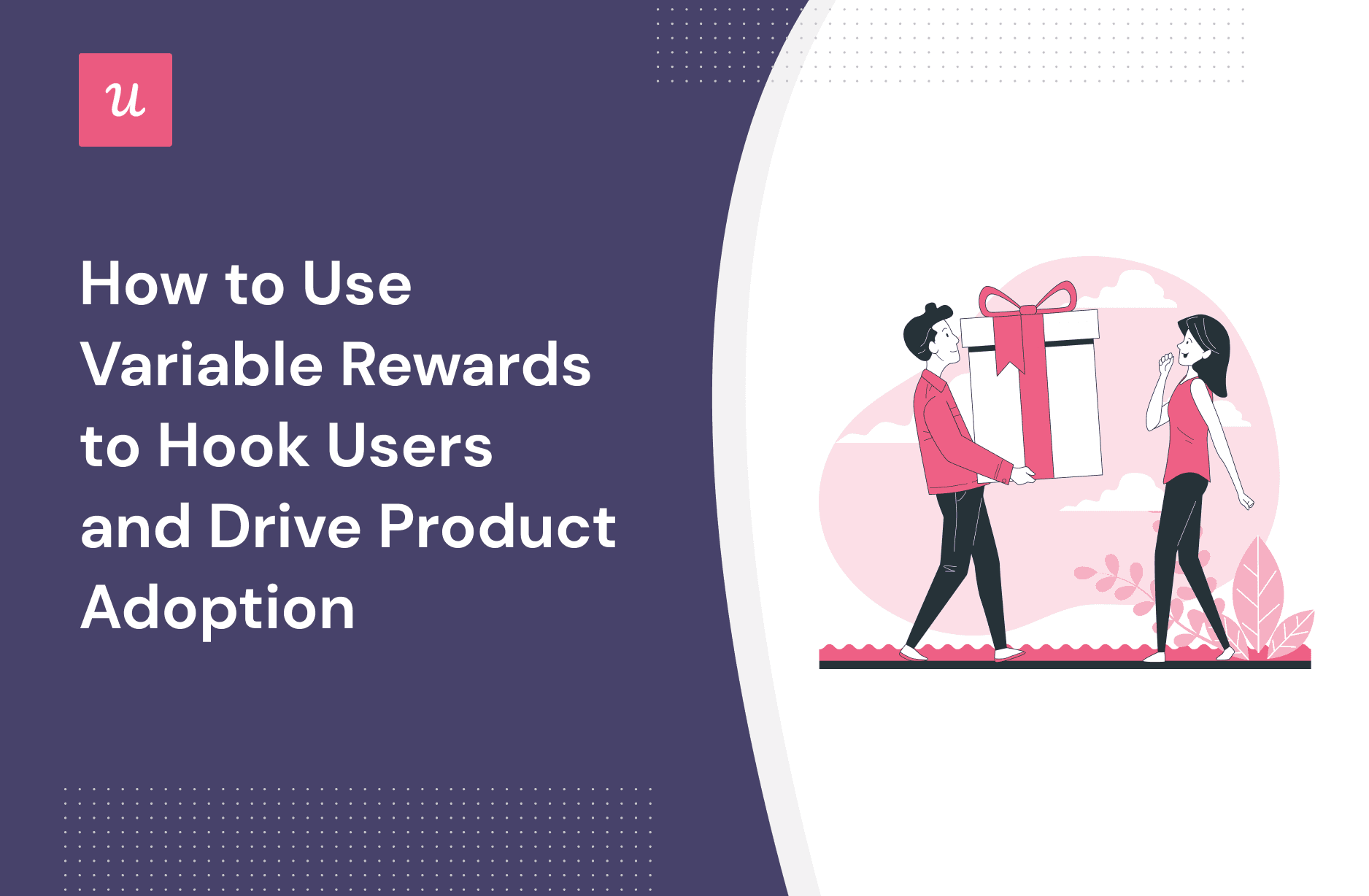
How to Use Variable Rewards to Hook Users and Drive Product Adoption
Try Userpilot Now
See Why 1,000+ Teams Choose Userpilot

What are variable rewards?
A variable reward is a gratification token used in the Hook Model, delivered intermittently, meant to keep users repeating the same action in the hope of another reward.
This reward system is powerful for driving attention, focus, and repeated action. It works because humans get pleasure from anticipation more than the reward itself.
We experience variable rewards every day—both online and off. It’s especially hard to miss online because this has been built into the fabric of social media and most tech products.
A good example of a variable reward is checking your emails frequently. You do so because you’re subconsciously hoping to see something unusual and important. You’ll occasionally see a vital email and return sometime later for more.
What is the hook model?
The Hook Model is a product management methodology developed by American behavioral economist and author Nir Eyal. It’s a multi-step process for creating habit-forming products and keeping users hooked.
The model has four phases: a trigger that prompts users, action in response to the trigger, a variable reward that keeps users motivated, and an investment of time and effort that ensures users will return.
The hook model is used by the most habit-forming products you know about. Think social media, casinos, online games, etc.
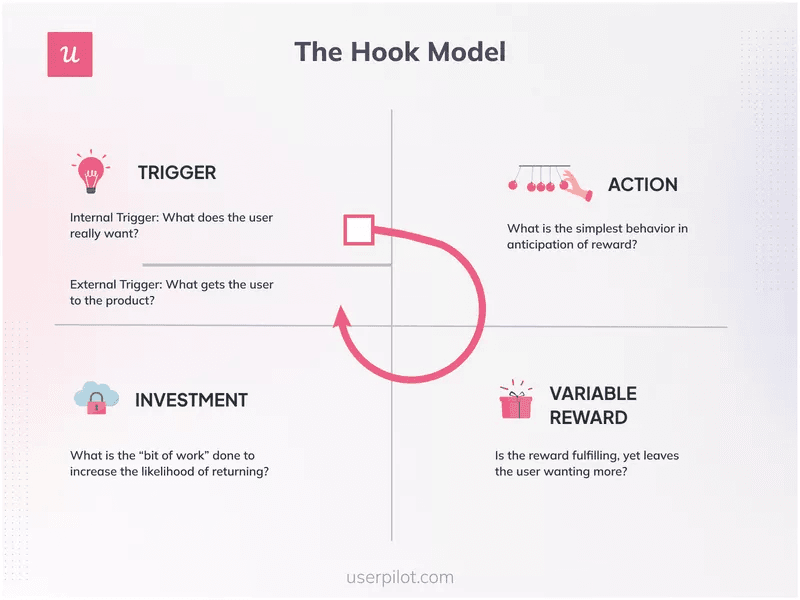
What is the psychology behind variable rewards?
Scientists have known for a long time that the brain responds favorably to rewards. But they thought this excitement came after the reward had been obtained.
B.F. Skinner proved this wrong with his variable ratio schedule experiments in the 1950s. The American psychologist used two levers that rats would press and get food for his study.
One of the levers provided the same amount of food each time. The other lever provided a variable amount—anything from zero food to a large chunk that only appeared occasionally.
Skinner noticed the rats with the variable lever were more active and persistent than those that received the same treat all the time.
This behavior was observed to be true in humans as well. We’ll rather take our chances at a big win even when the odds are small than go for a smaller but more predictable outcome.
Why?
Because predictable rewards keep our dopamine stable for that event. We, however, get a high dopamine rush in anticipation of rewards that we can’t exactly predict.
Types of variable rewards
Nir Eyal classifies variable rewards into three, corresponding to humans’ natural inclination to belong in tribes, hunt, and seek personal gratification.
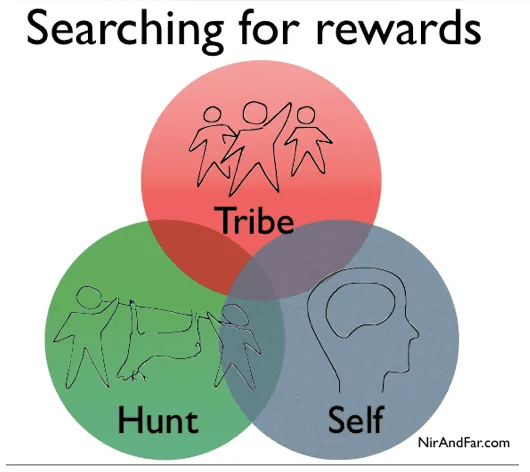
Rewards of Tribe
We’re social creatures that have learned to depend on each other for survival. As a result, we treat validation from others and connection to people as highly rewarding.
It’s why we get excited when someone likes, retweets, or comments on our social media posts. Something about that interaction tells us we belong in a community and others find us valuable.
You can weave the reward of the tribe in your product, too. Consider the following examples from SaaS companies like yours.
Asana’s reward of tribe example
Asana introduced celebrations in tasks so you can like comments of your colleagues. Even better, you can show your appreciation for their work and encourage them by adding colorful gifs and mood-boosting gifs.
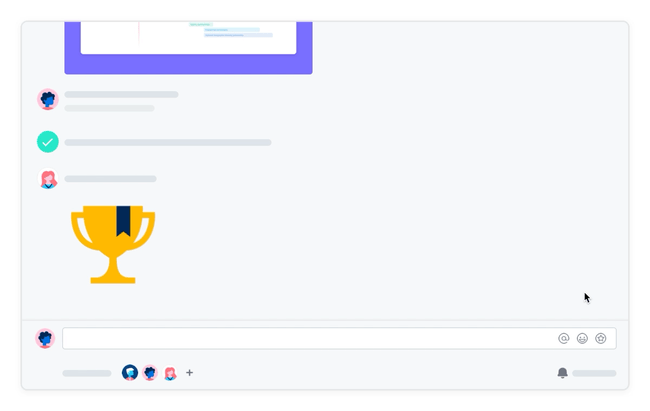
Slack’s reward of tribe example
Similar to social media, Slack gives you the opportunity to show your appreciation for colleagues in form of emojis.
The app allows you to react to people’s messages with a variety of cute emojis, which puts a smile on the receiver’s face.
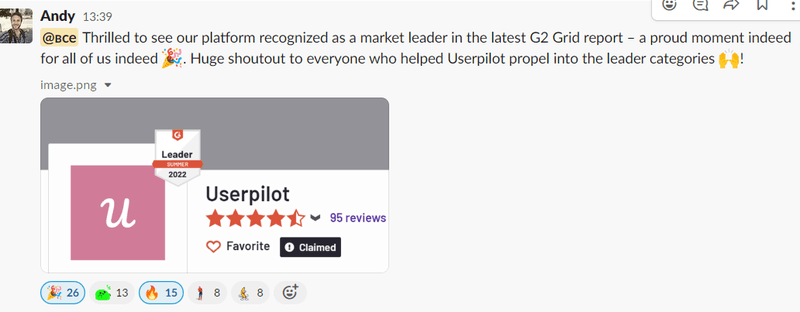
Rewards of Hunt
Our ancestors were hunters and gatherers. Many of us no longer hunt for animals, but the trait is still in us. We hunt for information, pleasure, sales, coupons, etc., and feel immense satisfaction from the process.
Here’s how software companies are using the reward of the hunt to their advantage:
ClickUp’s reward of hunt example
Click up uses monetary incentives to encourage users to engage with the app. Users are fascinated by the idea of earning some easy cash and most don’t think twice before taking the opportunity. In the process, they also learn more about the product and engage with it.
It’s a well-known fact that repeated engagement drives adoption and as a result, product growth. ClickUp uses this tactic among many others and from what we can see it works great for them.
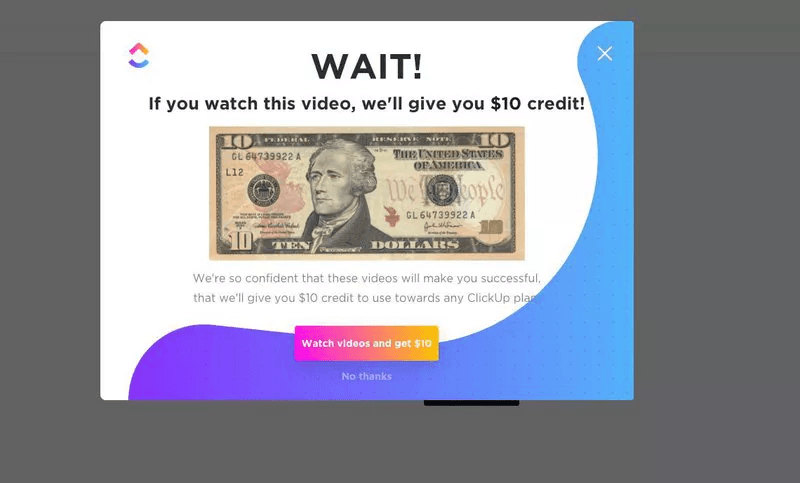
Tinder’s reward of hunt example
Tinder provides instant gratification with the added variability of meeting a potential mate.
You swipe the app for hours “hunting” for “variable rewards” – aka looking through profiles of different interesting strangers with the expectation of meeting one of them at some point.
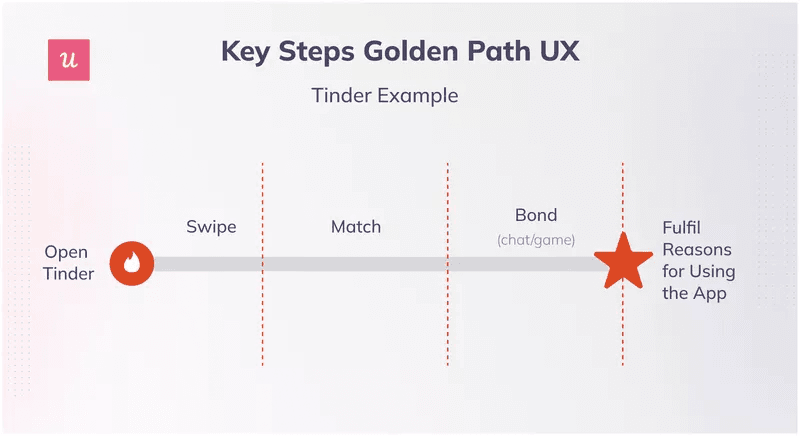
Rewards of Self
We all want to feel proficient, especially in activities that seem difficult at first.
Games are built around this need for personal gratification and they provide intrinsic rewards. Users are first introduced to simple tasks in the game, and the more complex ones come subsequently. This balance gives users a feeling that they can be good at the difficult tasks; hence they spend hours mastering them.
Personal gratification doesn’t just work in games. It’s a vital life force that pushes us to keep achieving more.
Duolingo’s reward of self example
Take the language learning app Duolingo for example. It awards users with badges for reaching milestones or completing actions.
People want to “pass” each level and simultaneously increase their proficiency, so seeing that their efforts are acknowledged makes them proud.
Additionally, Duolingo created XP, its learning currency. Users get XP by completing exercises and based on their performance in those exercises, users receive varying amounts of it to unlock other achievements along the way.
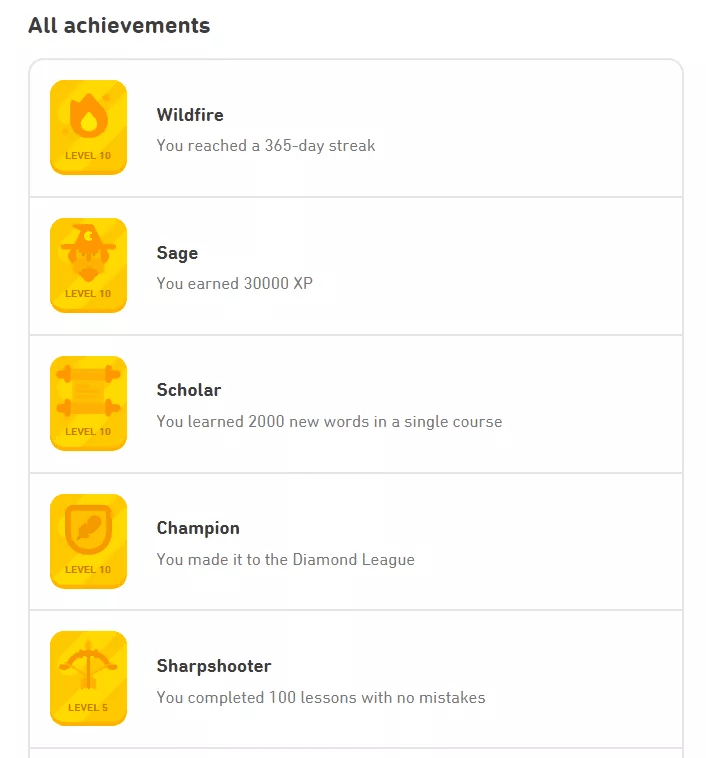
Salesforce’s rewards of self example
Salesforce challenges users to complete a gamified learning path.
Users learn something new in each station and feel proud of themselves as they come closer to finish.
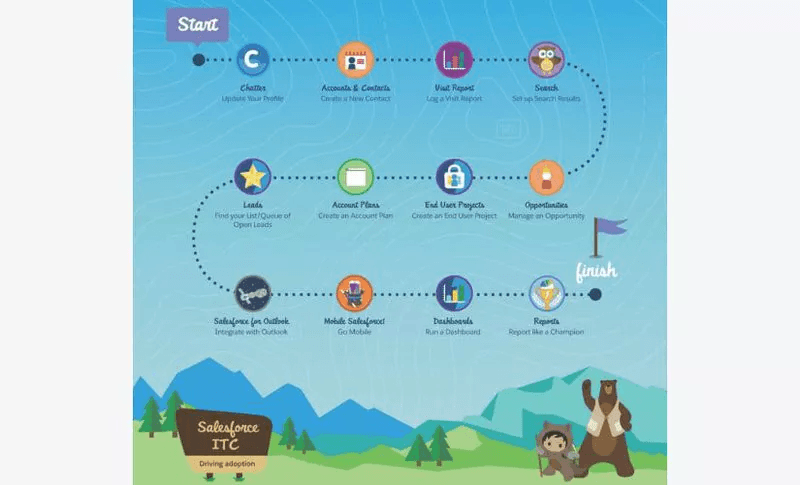
Hubspot’s reward of the self example
Another example is Hubspot triggering a sense of achievement in its users by providing badges for milestones reached.
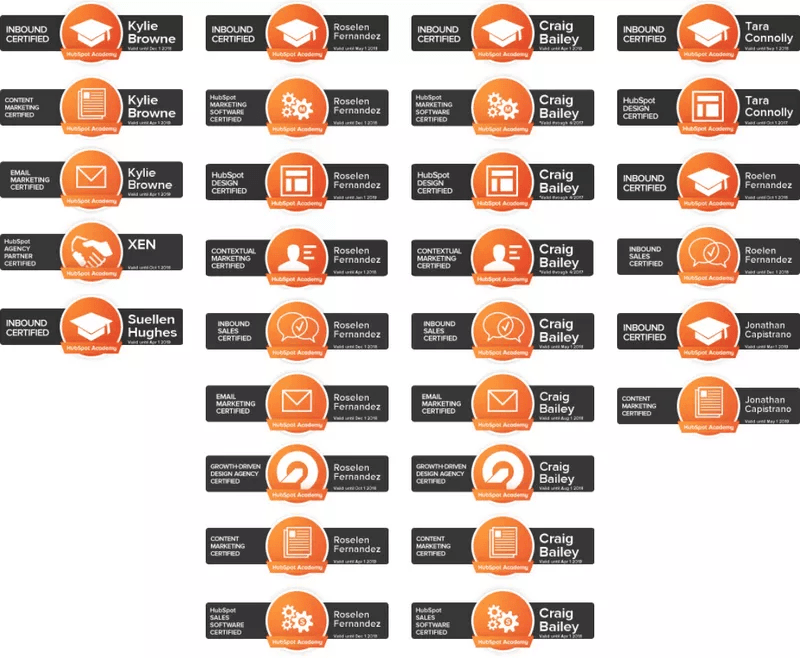
How to use variable rewards to drive product adoption
We have already discussed the theory of variable rewards, now let’s get to the best part and learn some of the tactics to put the theory into practice.
Reward users for completing checklists
Checklists are a great way of prompting users to take action and engage with your key features.
As a SaaS product, you are most likely already using checklists in your onboarding process. But did you know that you can significantly improve the completion rate if you award users with small incentives each time they complete a checklist?
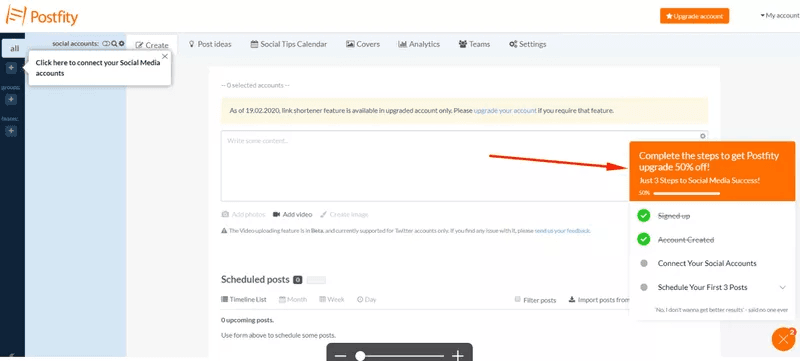
Adding variable rewards to your checklists will motivate users to complete them and wait for the next checklist.
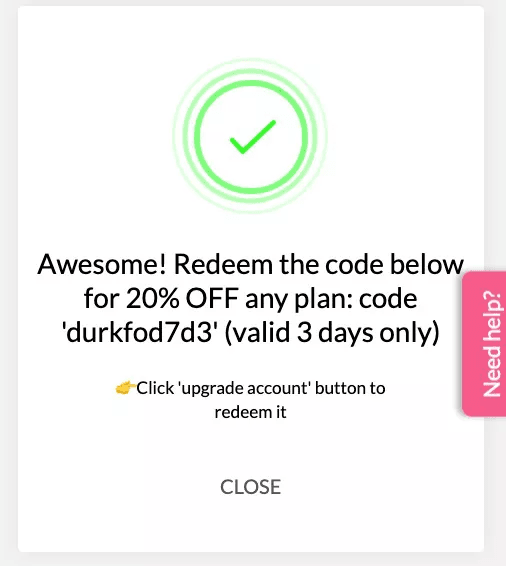
Apply variable rewards and gamify the user experience
Gamification brings fun to an otherwise boring activity. Because they enjoy the process, users easily commit to gamified tasks without much thought to the time and effort required.
The task management tool, Asana, uses gamification to motivate users. A celebratory creature appears each time a task is completed on the app. Different creatures for different milestones.
This may sound simple, but it keeps users going as they can’t wait to see what magical creature appears next.
It’s a win for the company as well. The more tasks users complete, the more value they get from the tool and the chances of adoption increase.
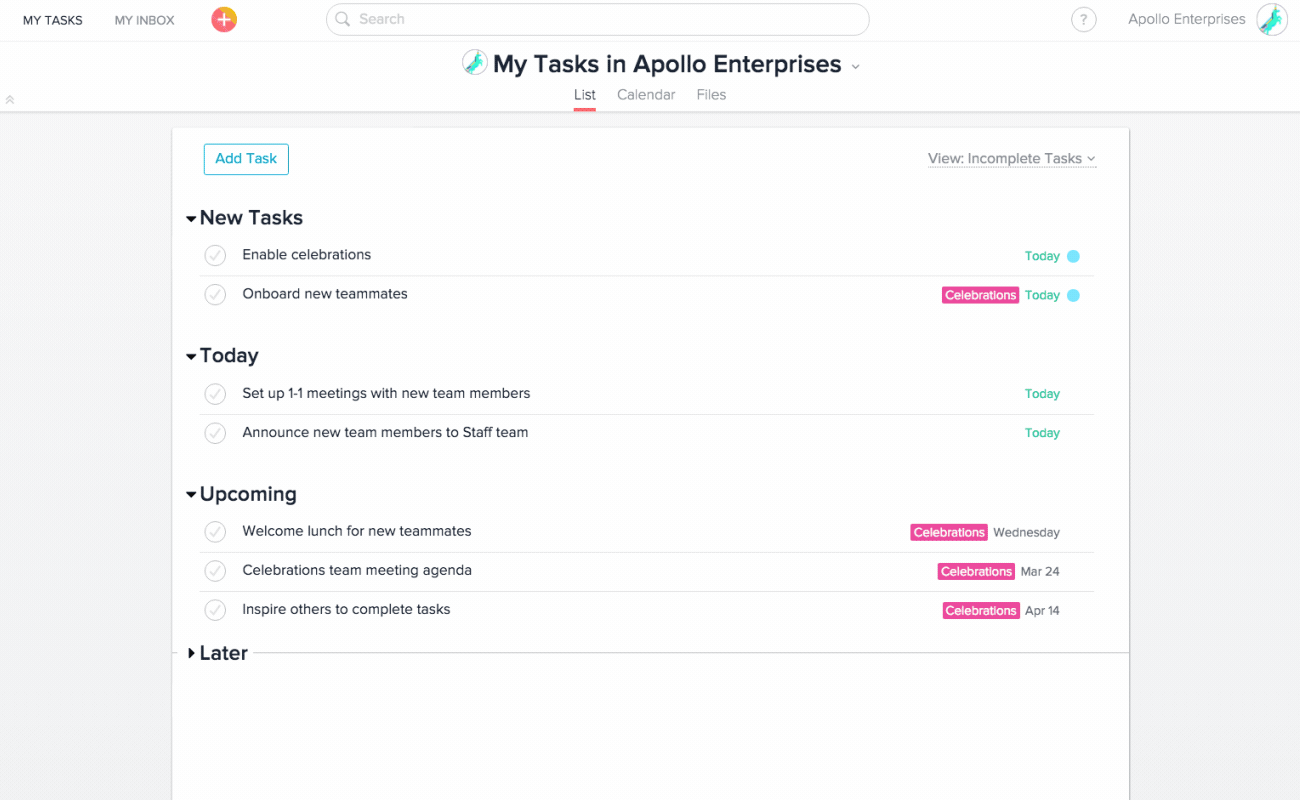
Incentivize users and drive engagement
Giving users small incentives for their engagement in the app is another way of putting the Hook Model into practice.
Everyone will be motivated if there’s an additional reward outside the obvious.
This is why incentivizing users is a good idea. Create a program to reward people for engaging with your app and watch as your adoption rate grows.
This method also works great for driving new feature engagement.
When there is a new feature, your customers aren’t used to using it and it hasn’t become part of their habitual way of using your product.
You should reward them every time that they use the feature. This is an example of a “continuous reinforcement schedule”—your reward every time the behavior occurs.
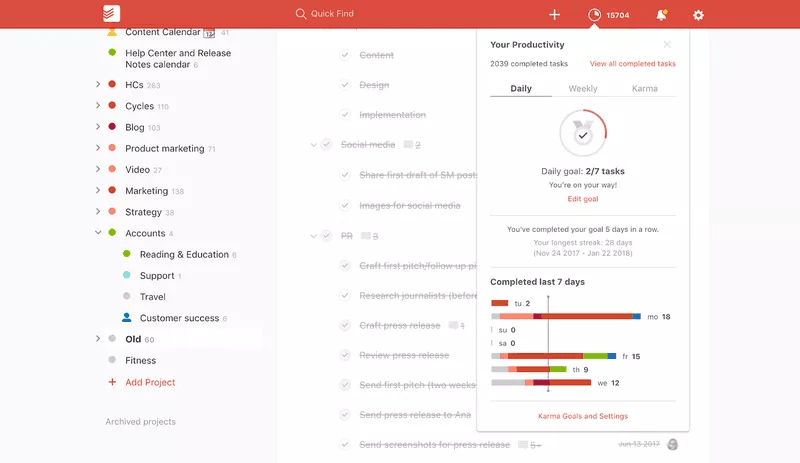
You can also engage mobile app users by creating personalized messaging, push notifications, and surveys.
Conclusion
Humans are in an endless search for something new and exciting.
Although we crave predictability and often struggle to find it, the anticipation of the unknown gives our brain higher dopamine doses, which affect our behavior in certain situations.
If you want to learn more about user psychology principles and methods for boosting user engagement and adoption, book a demo with our team.


